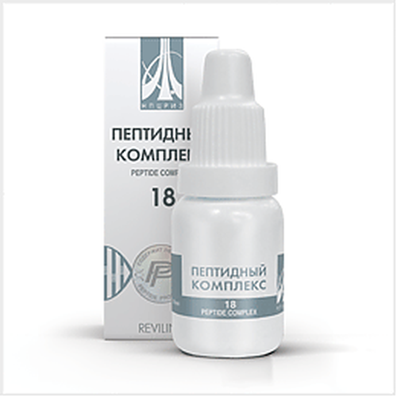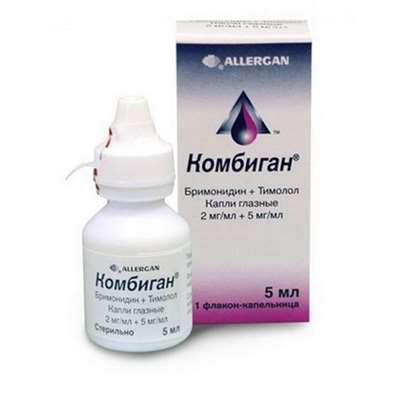Instruction for use: Cervarix
I want this, give me price
Dosage form: Suspension for intramuscular injection
Active substance: Vaccine against human papillomavirus
ATX
J07BM02 The papilloma virus (human virus types 16 and 18)
Pharmacological group:
Vaccines, serums, phages and toxoids
The nosological classification (ICD-10)
B97.7 Papillomavirus: Human papillomavirus; Asymptomatic selection of human papillomavirus; Papillomavirus infection; The papilloma virus; Upper respiratory tract papillomatosis; Papillomovirus infection; Human papillomaviruses
C53 Malignant neoplasm of cervix: Intraepithelial neoplasm of cervix uteri; Cervical carcinoma; Cervical cancer
Z29.1 Prophylactic immunotherapy: Vaccination against viral infections; donor Vaccination; Vaccination and revaccination; Vaccination of newborns; Vaccination against hepatitis B; Immunization; Correction of the immune status; Therapeutic and prophylactic immunization; Preventive immunization; Specific immunoprophylaxis; Stimulation of the processes of nonspecific immunit
Composition and release form
Suspension for intramuscular injection 0.5 ml (1 dose)
L1 proteins of human papillomavirus
Type 16 20 mkg
Type 18 20 mkg
Auxiliary substances: 3-o-deacyl-4'-monophosphoryl lipid A; Aluminum hydroxide; sodium chloride; Sodium dihydrogen phosphate dihydrate; water for injections
In bottles of 0.5 ml, in the contour plastic packaging (pallet) 1 bottle; In a pack of cardboard 1, 10 or 100 packages; Or in disposable syringes of 0.5 ml, complete with 1 or 2 needles (or without needles), in the contour plastic packaging (pallet) 1 syringe; In a pack of cardboard 1 or 10 packages.
Description of dosage form
Suspension is homogeneous, opaque, white, without foreign inclusions, with sedimentation divided into 2 layers: upper - transparent colorless liquid, lower - white precipitate.
Pharmachologic effect
Mode of action - Antiviral.
Pharmacodynamics
Recombinant adsorbed vaccine for the prevention of diseases caused by human papillomaviruses (HPV) containing an adjuvant AS04. It is a mixture of virus-like particles of recombinant HPV surface proteins of types 16 and 18, whose action is enhanced by the adjuvant system AS04.
L1, HPV-16 and HPV-18 proteins were obtained using recombinant baculoviruses HPV-16 and HPV-18 on Trichoplusia ni cell culture (Hi-5 Rix4446). AS04 consists of aluminum hydroxide and 3-O-desacyl-4'-monophosphoryl lipid A (MPL).
According to epidemiological data, in most cases, cervical cancer is caused by oncogenic human papillomaviruses. HPV-16 and HPV-18 are responsible for the occurrence of more than 70% of cases of cervical cancer, as well as about 50% of all cases of development of cervical intraepithelial lesions around the world.
Clinical efficacy
The efficacy of Cervarix ® for HPV-16 and HPV-18 and infection-related effects was confirmed by clinical studies involving 1113 persons aged 15-25 years. Combined analysis of the results of the study and subsequent 4-year follow-up showed:
- 94.7% effectiveness in preventing infection (95% CI: 83.5, 98.9);
- 96% efficacy against cervical infection persisting for at least 6 months (95% CI: 75.2, 99.9);
- 100% effective against cervical infection persisting for at least 12 months (95% CI: 52.2);
- 95.7% efficacy against HPV infection detected at the stage of cytological disorders * (95% CI: 83.5, 99.5);
- 100% protection against the development of HPV infection, detected histologically, at the CIN1 + ** stage (95% CI: 42.4, 100);
- 100% protection from the development of HPV infection, detected histologically, at the CIN2 + *** stage (95% CI: -7.7, 100).
The vaccine provides cross-protection in 40.6% of those vaccinated against any manifestations of HPV infection that have been cytologically detected by other oncogenic types of HPV (95% CI: 14.9, 58.8). The vaccine is effective in the development of any CIN2 lesions (regardless of the type of HPV virus DNA) in 73.3% of subjects (95% CI: -1; 95.2).
Immunogenicity of the vaccine
The full course of vaccination (according to the scheme 0-1-6 months) leads to the formation of specific antibodies against HPV-16 and HPV-18, determined in 100% vaccinated 18 months after the introduction of the last dose of the vaccine in the age groups from 10 to 25 years.
The maximum severity of the immune response was noted immediately after the completion of the vaccination course (7th month). Antibodies persisted for 4 years after observation after the first dose.
Additionally, the neutralizing ability of the produced antibodies has been proved.
All initially seronegative women, including the age group of 46-55 years, became seropositive after the completion of the vaccination course (7th month), the level of antibodies for the 7th month was at least 3-4 times higher than observed in the studies evaluating the effectiveness On the 18th month after vaccination. The protective level of antibodies was observed after 18 months and remained at the same level during the four-year observation period, without subsequent reduction.
In women initially seropositive for HPV-16 and / or HPV-18, Cervarix® caused the production of the same level of antibodies as in the initially seronegative women, with the antibody titer being significantly higher than that produced after the infection.
The AS04 adjuvant system causes a longer immune response, which is superior to that of aluminum salts as an adjuvant. The antibody titre when AS04 was used was at least twice as high within 4 years after the first dose, and the number of B lymphocytes in memory was more approximately doubled for 2 years after the first dose.
* Cytological abnormalities include abnormal ASC-US flat squares, low squamous cell intraepithelial lesion (LSIL), high squamous intraepithelial lesion (HSIL), and the presence of abnormal planar cells in which HSIL (ASC-H) cannot be excluded ).
** Intraepithelial cervical neoplasia of the 1 st degree and higher.
*** Intraepithelial cervical neoplasia of the 2nd degree and higher.
Indication of the Cervarix
Prevention of cervical cancer in girls and women from 10 to 25 years;
Prevention of acute and chronic infections caused by HPV, cellular disorders involving the development of atypical flat cells of unknown significance (ASC-US), intraepithelial cervical neoplasia (CIN), precancerous lesions (CIN2 +) caused by oncogenic HPV in girls and women 10-25 years .
Contraindications
Hypersensitivity to any of the components of the vaccine;
Reactions of hypersensitivity to the previous administration of Cervarix®.
Acute febrile condition, caused by t.ch. Exacerbation of chronic diseases.
Application in pregnancy and breastfeeding
Controlled studies on the use of the Cervarix® vaccine during pregnancy and during lactation were not conducted.
In experimental studies, no data were obtained on the possible adverse effects of the vaccine on fetal development or postnatal development. Nevertheless, vaccination with Cervarix ® during pregnancy is recommended to postpone and spend it after childbirth.
In experimental studies in animals, it has been shown that antibodies to vaccine antigens with milk can be isolated.
Side effects
In controlled trials of the Cervarix® vaccine, pain at the injection site was most often recorded.
The adverse reactions listed below are grouped according to organ systems and frequency of occurrence: very often ≥10%; Often - ≥1%, but <10%; Sometimes - ≥ 0.1%, but <1%; Rarely - ≥0.01%, but <0.1%, very rarely - <0.01%, including individual messages.
From the side of the central nervous system: very often - headache, fatigue; Sometimes - dizziness.
From the digestive system: often - nausea, vomiting, diarrhea, abdominal pain.
From the skin and its appendages: often - itching, rash, hives.
From the osteomuscular system and connective tissue: very often - myalgia; Often - arthralgia; Rarely - muscle weakness.
Infectious complications: sometimes - infections of the upper respiratory tract.
On the part of the body as a whole and related to the place of administration: very often - a feeling of fatigue, local reactions involving pain, redness, swelling; Often fever (≥38 ° C); Sometimes other reactions at the site of administration, including compaction, decreased local sensitivity, pruritus.
Interaction
Data on the interaction of Cervarix ® with other vaccines when they are used simultaneously are not available.
Clinical studies have found that approximately 60% of women who received the Cervarix ® vaccine used oral contraceptives. Data on the adverse effects of contraceptives on the efficacy of the Cervarix® vaccine are not available.
It is assumed that in patients receiving immunosuppressants, an adequate immune response may not be achieved.
Dosing and Administration
IM, in the deltoid region of the muscle. Cervarix® under no circumstances should be administered iv or iv.
Before use, the vaccine should be visually inspected for absence of foreign matter and shake the syringe or vial well to obtain a non-transparent suspension of whitish color. If the vaccine does not correspond to the above description or contains extraneous particles, it should be destroyed.
Vaccination schedules
The recommended single dose for girls over 10 years and women - 0.5 ml.
The scheme of primary immunization includes the introduction of three doses of the vaccine according to the scheme of 0-1-6 months.
The need for revaccination has not been established to date.
Overdose
To date, no cases of overdose have been reported.
Special instructions
Cervarix ® should be used with caution in thrombocytopenia or disorders of the blood coagulation system, since during the IM introduction, bleeding may occur.
Currently, there is no evidence of the possibility of IV administration of Cervarix ®.
It is unlikely that Cervarix® can cause regression of lesions, and also prevent the progression of a disease caused by HPV-16 and / or HPV-18 before vaccination, and therefore the use of the vaccine for this purpose is not indicated. Clinical evidence suggests that Cervarix® is safe and immunogenic when administered to persons seropositive for HPV-16 and / or HPV-18 who have no evidence of an intraepithelial lesion in cytologic examination or only atypical flat cells of an ambiguous value (ASC-US).
Vaccination does not prevent infection and diseases caused by certain types of HPV.
Vaccination is a method of primary prevention and does not negate the need for regular examinations at the doctor (secondary prevention).
In connection with the possibility of developing an anaphylactic reaction in rare cases, the vaccinated should be under medical supervision for 30 minutes, and procedural rooms should be provided with anti-shock therapy.
In patients with immunodeficiency states, for example, in HIV infection, an adequate immune response may not be achieved.
Influence on the ability to drive vehicles and manage mechanisms
Special studies on the effect of the vaccine on the ability to drive a car or work with mechanisms have not been carried out. However, the clinical status of patients and the profile of adverse reactions should be considered.
Storage conditions of the drug Cervarix
At a temperature of 2-8 ° C (do not freeze).
Keep out of the reach of children.
Shelf life of the drug Cervarix
3 years.
Do not use after the expiry date printed on the package.

 Cart
Cart





